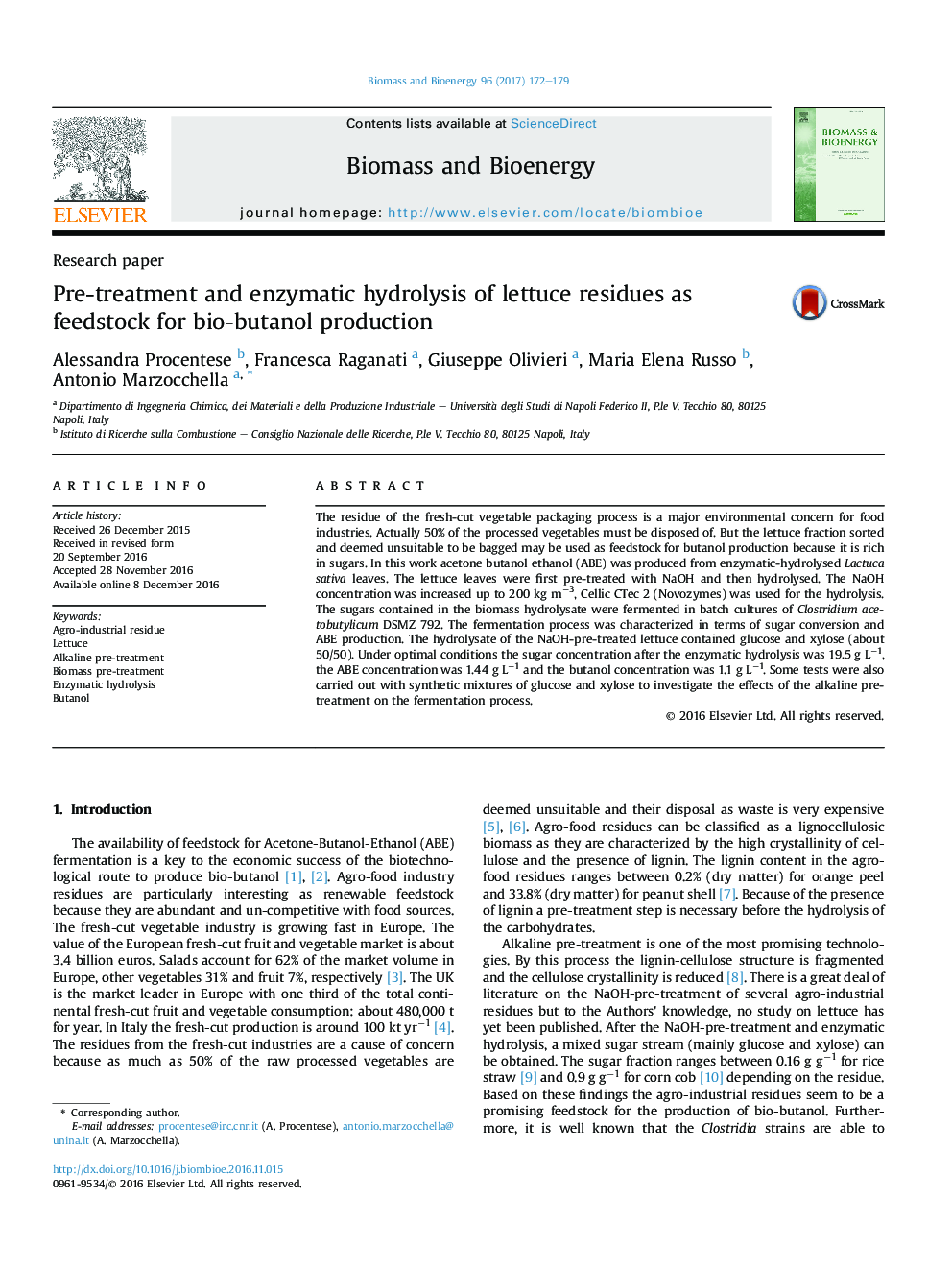| Article ID | Journal | Published Year | Pages | File Type |
|---|---|---|---|---|
| 4996416 | Biomass and Bioenergy | 2017 | 8 Pages |
â¢Vegetable residues from 'fresh cut' market were studied as feedstock for ABE fermentation.â¢ABE was produced from enzymatic-hydrolysed of NaOH-pretreated lettuce residues.â¢ABE fermentation with synthetic medium and hydrolysed lettuce were compared.â¢1.1 g Lâ1 butanol was obtained from feedstock pretreated with 80 kg mâ3 NaOH.
The residue of the fresh-cut vegetable packaging process is a major environmental concern for food industries. Actually 50% of the processed vegetables must be disposed of. But the lettuce fraction sorted and deemed unsuitable to be bagged may be used as feedstock for butanol production because it is rich in sugars. In this work acetone butanol ethanol (ABE) was produced from enzymatic-hydrolysed Lactuca sativa leaves. The lettuce leaves were first pre-treated with NaOH and then hydrolysed. The NaOH concentration was increased up to 200 kg mâ3, Cellic CTec 2 (Novozymes) was used for the hydrolysis. The sugars contained in the biomass hydrolysate were fermented in batch cultures of Clostridium acetobutylicum DSMZ 792. The fermentation process was characterized in terms of sugar conversion and ABE production. The hydrolysate of the NaOH-pre-treated lettuce contained glucose and xylose (about 50/50). Under optimal conditions the sugar concentration after the enzymatic hydrolysis was 19.5 g Lâ1, the ABE concentration was 1.44 g Lâ1 and the butanol concentration was 1.1 g Lâ1. Some tests were also carried out with synthetic mixtures of glucose and xylose to investigate the effects of the alkaline pre-treatment on the fermentation process.
